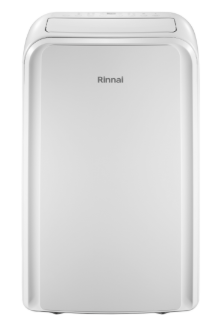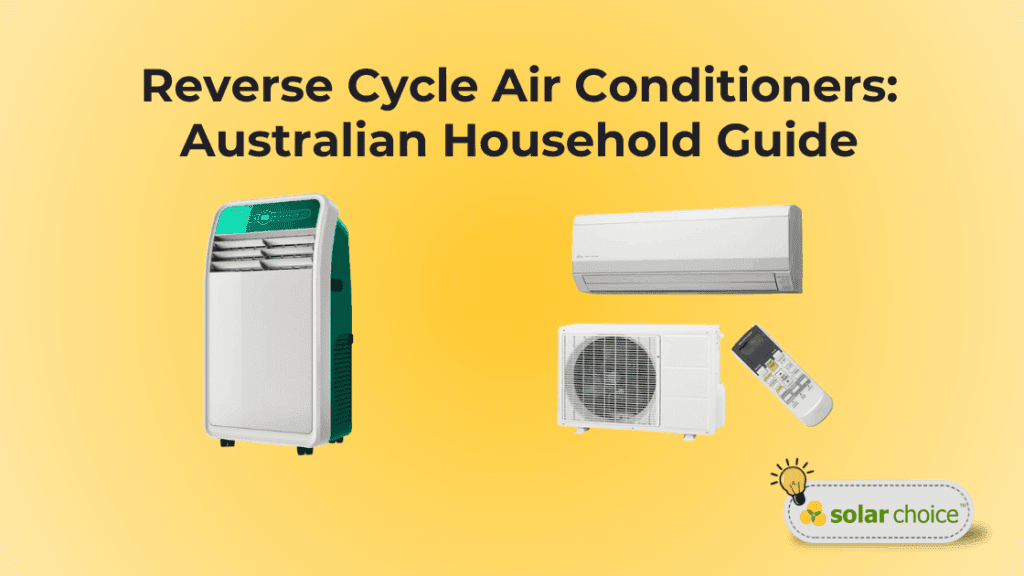Air conditioning is no longer a luxury in Australia – it’s an essential part of keeping our homes comfortable through the extremes of summer and winter. One type of system has become especially popular: the reverse cycle air conditioner. This technology offers both cooling and heating in one appliance. For homeowners considering a new system or an upgrade, understanding how reverse cycle air conditioners work and when they are the right choice can help you make an informed decision.
This guide explains what a reverse cycle air conditioner is, how it compares to other options, efficiency and cost tips, climate considerations across different states, and the pros and cons. We’ll also cover portable reverse cycle air conditioners, which can be a good option for renters or those needing a flexible setup.
What Is a Reverse Cycle Air Conditioner?
A reverse cycle air conditioner is essentially an air conditioner that works in both directions. In summer, it operates like a normal air conditioner – extracting heat from inside your home and releasing it outside, cooling the indoor air. In winter, the system literally “reverses” its cycle, pulling heat from the outside air (even on cold nights) and transferring it indoors to warm your space. This is why they are often called heat pumps.
How it works in simple terms
Think of your fridge: it removes heat from inside and expels it out the back. A reverse cycle air conditioner does something similar, but it can switch direction. The key components – a compressor, evaporator, condenser, and a special reversing valve – allow the unit to change from cooling to heating with the press of a button.
Even when it feels cold outside, there is still usable heat energy in the air. Reverse cycle systems capture this heat and amplify it through the refrigerant process. Most modern units operate efficiently in outdoor temperatures well below zero, although in Australia only alpine and highland areas regularly see such extremes.
Reverse cycle air conditioners are efficient
The real advantage is efficiency. Instead of generating heat by burning gas or using an electric element, a reverse cycle air conditioner moves heat. That means for every 1 kilowatt (kW) of electricity used, you might get 3 to 6 kW of heating or cooling output. This performance makes them far more efficient than traditional electric heaters and usually cheaper to run than gas heating.
Reverse cycle is popular
Reverse cycle systems are the most widely used form of home air conditioning in Australia. Their popularity has grown because they provide a two-in-one solution, align with our push for greater energy efficiency, and suit the diverse climates across the country. Many state energy programs and sustainability authorities highlight reverse cycle air conditioning as the most cost-effective form of electric heating.
Safety and environmental benefits
Unlike unflued gas heaters or fireplaces, reverse cycle air conditioners produce no direct combustion products indoors. They don’t have exposed hot elements, making them safer for children and pets. Environmentally, their high efficiency means lower emissions per unit of heating or cooling, especially when paired with rooftop solar.
Compare quotes from local, reputable Air Con installers
Types of Reverse Cycle Air Conditioners
There are several formats available, each suiting different home layouts and budgets:
- Split-system: The most common type, with one indoor wall unit and one outdoor compressor. Ideal for single rooms or open-plan areas.
- Multi-split: One outdoor unit connected to multiple indoor units, allowing independent temperature control in different rooms.
- Ducted: A central unit distributing air through ducts to every room, often with zoning controls. Provides whole-home comfort but at a higher upfront cost.
- Portable: A self-contained unit on wheels with an exhaust hose, capable of both heating and cooling. Best for renters or temporary setups.
Portable Reverse Cycle Air Conditioners

Portable reverse cycle air conditioners offer flexibility when installing a fixed unit isn’t possible. They plug into a standard power point and vent hot air through a hose placed in a window or door opening.
Advantages:
- No professional installation required.
- Can be moved between rooms and to a new home (if renting).
- Lower upfront cost than split or ducted systems.
Drawbacks:
- Less efficient, meaning higher running costs.
- Limited to small or medium-sized rooms.
- Noisier, as the compressor is inside the room.
- Require window access for the exhaust hose.
For renters or those needing a short-term solution, portables can be a practical choice. For long-term comfort, a split-system is usually better value.
Pros and Cons Of Reverse Cycle Air Conditioners
| Pros | Cons |
| Provides both heating and cooling in one system | Higher upfront cost compared to basic heaters or coolers |
| Highly energy-efficient (3–6x output per kWh) | Requires electricity – won’t work during power outages |
| Safer and cleaner than gas or electric heaters | Installation needed for split/ducted systems |
| Can improve indoor air quality with filters | Less effective in extreme cold (rare in most of Australia) |
Energy Efficiency & Cost Tips
One of the biggest attractions of reverse cycle air conditioners is their efficiency, but getting the best results requires the right choices and habits.
Size the unit correctly
An oversized unit will cycle on and off too frequently, wasting energy. An undersized one will struggle to reach set temperatures and run constantly. Use calculators or professional advice to determine the correct kW capacity for your room size, ceiling height, and insulation level.
Understand the energy label
Modern units in Australia display the Zoned Energy Rating Label, showing performance in hot, average, and cold climates. This helps you choose a model best suited to your state’s conditions. More stars mean greater efficiency.
Thermostat habits
In summer, set your system between 24–26 °C. In winter, aim for 18–20 °C. Each degree of extra cooling or heating can add around 5–10% to running costs. Consistent, moderate settings are more efficient than extreme ones.
Zoning and smart features
If your system offers zoning, only heat or cool the rooms you’re actually using. Many newer systems have Wi-Fi apps or timers so you can schedule operation around your daily routine.
Solar synergy
Running your air conditioner during the day when solar panels are generating can cut electricity costs dramatically. In summer, when cooling demand is highest, solar output is also at its peak.
Maintenance matters
Clean the indoor filters regularly – at least every couple of months in peak season. Ensure the outdoor unit is clear of leaves and dust. Professional servicing every few years will maintain efficiency and extend lifespan.
Compare quotes from local, reputable Air Con installers
Climate and State Differences Across Australia
Australia’s varied climate means your location has a big impact on how you’ll use a reverse cycle air conditioner.
Tropical north (Darwin, Cairns, North Queensland)
- Cooling and humidity control are the top priorities.
- Split-system reverse cycle units are popular because they dehumidify while cooling.
- Ducted systems are less common due to condensation issues.
- Heating function is rarely used but can be handy on cooler nights.
Dry, hot summers and cold winters (Adelaide, Perth, Canberra, inland regions)
- These areas experience both extremes. Reverse cycle systems are ideal, offering efficient cooling in summer and heating in winter.
- Ducted systems with zoning are popular for whole-house comfort.
- Far more efficient than running separate evaporative cooling and gas heating systems.
Mild coastal climates (Sydney, Brisbane, coastal NSW/QLD)
- Cooling is needed in summer, but winters are milder.
- Split-systems dominate, installed in main living areas and bedrooms.
- Larger homes may opt for ducted systems, though retrofitting can be challenging in older buildings.
Cold southern climates (Tasmania, regional highlands)
- Heating demand is high. Choosing a cold-climate rated model is important.
- Reverse cycle systems are extremely efficient compared to resistive electric heating.
- Occasional defrost cycles are normal in sub-zero conditions.
Regional and rural considerations
- Power reliability can be an issue. Homes may want a backup heating option if outages are common.
- Electricity tariffs vary – in areas with high rates, investing in the most efficient model pays off quickly.
- Where gas or firewood is expensive, reverse cycle units can be the cheapest heating method available.
Conclusion
A reverse cycle air conditioner is one of the most versatile and efficient ways to keep your home comfortable in Australia’s diverse climates. By providing both heating and cooling in a single system, it can replace the need for multiple appliances, reduce energy bills, and improve indoor air quality.
Whether you’re in tropical Queensland needing humidity control, or Tasmania seeking efficient winter warmth, there is a reverse cycle system to suit your home. With the right size, careful use, and attention to energy efficiency, it can deliver year-round comfort at a lower cost than most alternatives – making it the smart choice for many Australian households.
Compare quotes from local, reputable Air Con installers
FAQs
Do reverse cycle air conditioners work in winter?
Yes. They extract heat from the outside air and transfer it indoors. Modern systems work efficiently even when it’s close to freezing outside.
Are they cheaper to run than heaters?
Usually yes. A reverse cycle unit can deliver 3–6 kW of heat for every 1 kW of electricity. By contrast, electric heaters give only 1 kW of heat per kW of electricity used.
Can renters use them?
Renters often choose portable reverse cycle air conditioners. They don’t require installation and can be moved between rooms, though they are less efficient.How long do they last?
With proper maintenance, most units last 10–15 years. Regular servicing helps maintain performance and efficiency over that time.
- APsystems Battery Review: An Independent Assessment by Solar Choice - 18 December, 2025
- Running Cost of Air Conditioners – Explained - 7 October, 2025
- Air Conditioner Rebate South Australia: What You Need to Know - 19 September, 2025
